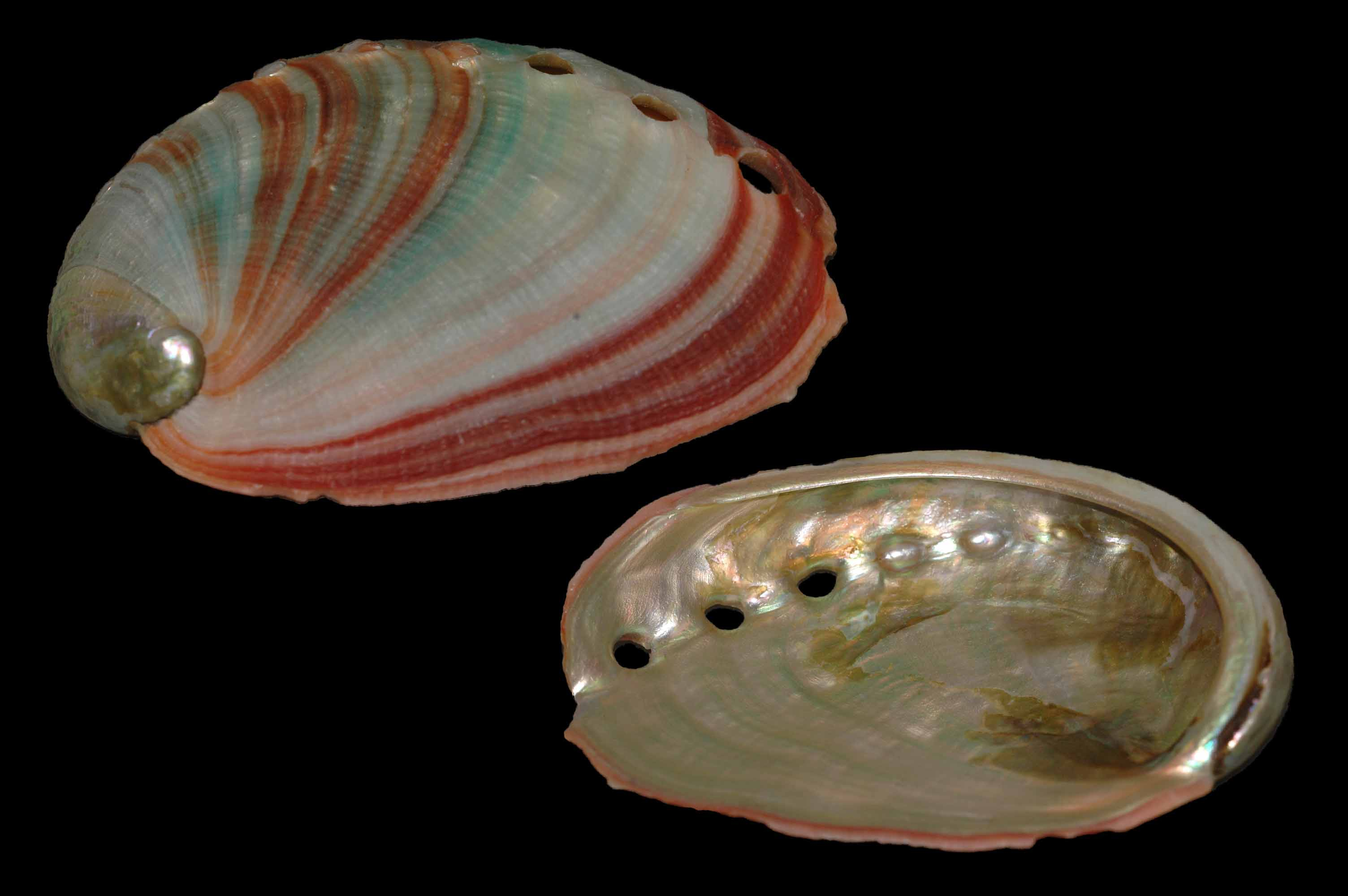Disk abalone
(Haliotis discus)

Description
Haliotis discus, commonly called disk abalone or Edo abalone, is a species of abalone sea snail. The size of the shell varies between 100 mm and 150 mm. "This species is closely allied in all characters to Haliotis kamtschatkana but is more elongated than the typical Kamtschatkana. The interior surface has a peculiarly metallic luster, light bronze-green and coppery-red predominating." H. discus is endemic to the waters off Japan and eastern Asia. Haliotis, common name abalone, is the only genus in the family Haliotidae. This genus once contained six subgenera. These subgenera have become alternate representations of Haliotis. The genus consists of small to very large, edible, herbivorous sea snails, marine gastropod molluscs. The number of species recognized worldwide ranges between 30 and 130, with over 230 species-level taxa described. The most comprehensive treatment of the family considers 56 species valid, with 18 additional subspecies. Other common names are ear shells, sea ears, and, rarely, muttonfish or muttonshells in parts of Australia, ormer in the UK, perlemoen in South Africa, and the Maori name for three species in New Zealand is pāua. The shells of abalones have a low, open, spiral structure, and are characterized by having several open respiratory pores in a row near the shell's outer edge. The thick inner layer of the shell is composed of nacre, which in many species of abalone is highly iridescent, giving rise to a range of strong, changeable colors, which make the shells attractive to humans as decorative objects, in jewelry, and as a source of colorful mother-of-pearl. The shell of abalones is convex, rounded to oval shape, and may be highly arched or very flattened. The shell of the majority of species is ear-shaped, presenting a small, flat spire and two to three whorls. The last whorl, known as the body whorl, is auriform, meaning that the shell resembles an ear, giving rise to the common name "ear shell". Haliotis asinina has a somewhat different shape, as it is more elongated and distended. The shell of Haliotis cracherodii cracherodii is also unusual as it has an ovate form, is imperforate, shows an exserted spire, and has prickly ribs. A mantle cleft in the shell impresses a groove in the shell, in which are the row of holes (known as tremata), characteristic of the genus. These holes are respiratory apertures for venting water from the gills and for releasing sperm and eggs into the water column.
Taxonomic tree:







